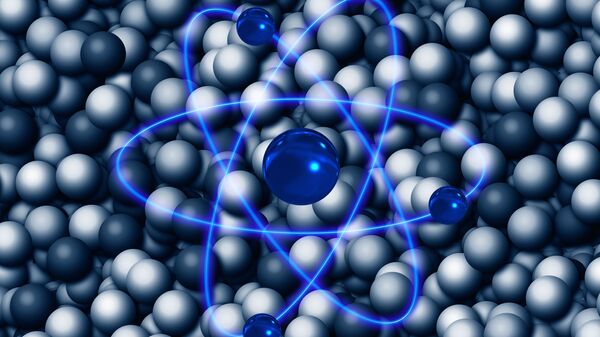Researchers have determined the spectral-angular characteristics of the emission of electrons in various radiators and developed a method for their reliable identification. The results have been published in the JETP Letters journal.
Many international scientific teams are engaged in the development of thermonuclear energy sources. For this purpose, it is planned to use a special reactor for the fusion of the nuclei of hydrogen isotopes (tokamak).
It is a large chamber in which plasma is heated by a circulating current to temperatures up to hundreds of millions of degrees. It results in a fusion reaction and its products carry away energy, which is then processed into electricity.
Another approach to the use of laser technology is being investigated. We are talking about obtaining a thermonuclear reaction by synchronising fluxes of several dozen lasers at the point where the capsule containing the thermonuclear "fuel" is placed.
However, there are some problems with creating effective thermonuclear installations, according to Alexander Potylitsyn, a professor at the TPU Research School of Physics of High-Energy Processes.
"All these approaches were based on the well-known theoretical conclusion that the products of a thermonuclear reaction are mainly neutrons and alpha particles that interact with the front wall of the reactor. Nevertheless, it turned out that there are also electrons with very high energy. They can carry additional radiation load on the wall, which will lead to its premature destruction. Such electrons, called "runaway", are being intensively investigated now", he tells Sputnik.
Scientists have carried out experiments with "runaway" electrons, mainly using model installations, which should generate electrons of approximately the same energy as in the course of a thermonuclear reaction.
Researchers at the Institute of High Current Electronics conducted a series of similar experiments on electron fluxes of high-current accelerators. However, the energy of these installations was not enough for full-scale research, so they decided to continue the experiments using the accelerator at Tomsk Polytechnic University.
“Now we are studying the characteristics of the optical radiation of electrons on the TPU's Microtron, in which electrons are accelerated to an energy [level] of 3-6 MeV. This is exactly the right energy range for us. Our colleagues from Italy and China mainly focus on high-current sources of electrons, in which the energy does not exceed 1 MeV. In 2019, we carried out the first experiments with electrons at an energy [level] of 6 MeV", Alexander Potylitsyn says.
Nowadays, researchers are carrying out experiments with electrons at an energy level of 3 MeV, first using quartz, polymethyl methacrylate, and sapphire radiators. To detect electrons, scientists propose to use methods for registering Cherenkov radiation caused by these electrons as they pass through a transparent environment at a speed exceeding the phase velocity of light propagation in it.
As a result, scientists will develop recommendations to create efficient detectors for planned and operating thermonuclear reactors.




